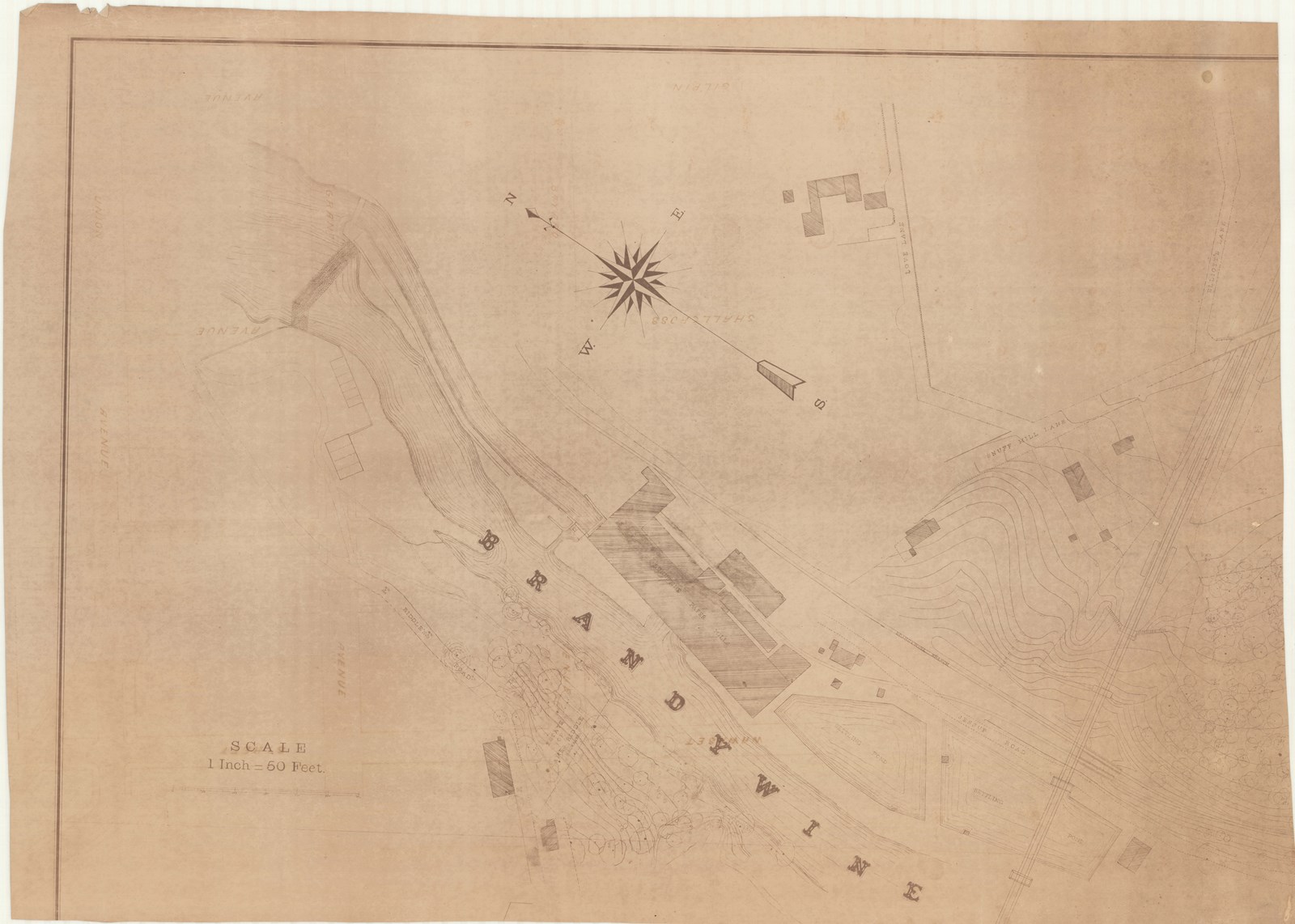Last updated: May 24, 2024
Place
Brandywine Park

Olmsted Archives, Job #01080, Wilmington, DE
Quick Facts
Frederick Law Olmsted didn’t teach in a classroom or assign homework. Instead he taught his students, future professionals in landscape architecture, about the best practices for achieving an urban park.
Though he wouldn’t go on the have a career in landscape architecture, Samuel Canby was one of the many concerned professionals who reached out to Olmsted in the late 1800s, seeking advice on how to better his hometown of Wilmington, DE.
Enthusiasm for open green space was growing the United States, thanks in large part to European park planning, where social and economic forces meant creating a better environment for the masses a priority.
In 1883, Delaware legislature passed a bill providing "Public Parks for the use of the citizens of Wilmington and vicinity, and creating a Board of Park Commissioners to take the care and management of such lands as would be acquired under the provisions of the act.”.
Canby, the first president of the Board of Park Commissioners, was also appointed chief engineer in laying out the new park. Immediately, Canby sought the advice of Olmsted.
Olmsted took a trip to Wilmington where he viewed several possible sites for the new park. Upon seeing Brandywine Creek, he enthusiastically recommended the land along the water be obtained for a park.
With Olmsted as his teacher, Canby made sure to embrace and enhance the natural beauty of the land. Also, from Olmsted, Canby blended roads, pathways, and walkways to make them inconspicuous within the park landscape.
Not only is Brandywine Park the largest urban park in Delaware, it was the first park established in Wilmington, fulfilling the growing city’s need for public recreational space.
Source: "Brandywine Park," The Cultural Landscape Foundation
For more information and primary resources, please visit:
Olmsted Research Guide Online
Olmsted Archives on Flickr
Though he wouldn’t go on the have a career in landscape architecture, Samuel Canby was one of the many concerned professionals who reached out to Olmsted in the late 1800s, seeking advice on how to better his hometown of Wilmington, DE.
Enthusiasm for open green space was growing the United States, thanks in large part to European park planning, where social and economic forces meant creating a better environment for the masses a priority.
In 1883, Delaware legislature passed a bill providing "Public Parks for the use of the citizens of Wilmington and vicinity, and creating a Board of Park Commissioners to take the care and management of such lands as would be acquired under the provisions of the act.”.
Canby, the first president of the Board of Park Commissioners, was also appointed chief engineer in laying out the new park. Immediately, Canby sought the advice of Olmsted.
Olmsted took a trip to Wilmington where he viewed several possible sites for the new park. Upon seeing Brandywine Creek, he enthusiastically recommended the land along the water be obtained for a park.
With Olmsted as his teacher, Canby made sure to embrace and enhance the natural beauty of the land. Also, from Olmsted, Canby blended roads, pathways, and walkways to make them inconspicuous within the park landscape.
Not only is Brandywine Park the largest urban park in Delaware, it was the first park established in Wilmington, fulfilling the growing city’s need for public recreational space.
Source: "Brandywine Park," The Cultural Landscape Foundation
For more information and primary resources, please visit:
Olmsted Research Guide Online
Olmsted Archives on Flickr
